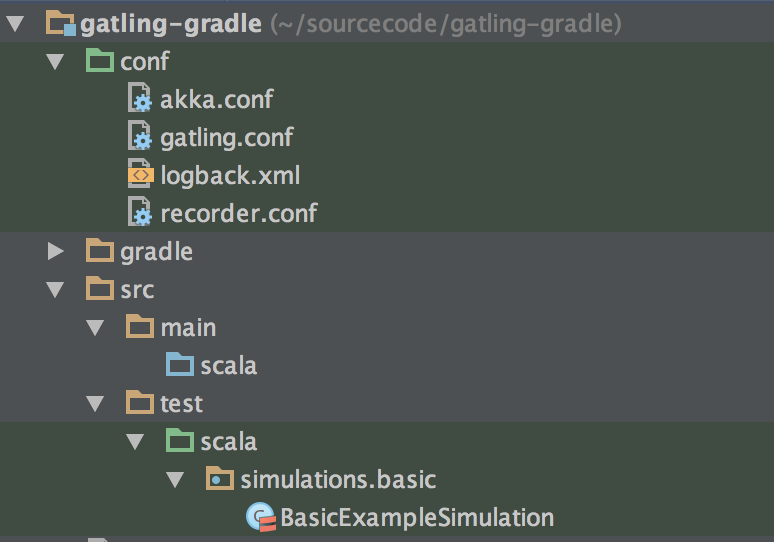Gatling作為次時代的效能測試工具,由於其API簡潔明瞭、效能出眾,越來越受歡迎。但是執行Gatling指令碼卻有諸多不便,其提供的預設方式不是很方便。考慮到Gatling指令碼本質上是Scala類,執行的時候還是使用的是java虛擬機器,我們可以將其指令碼的執行與Gradle結合起來。這樣子就可以通過Gradle來執行Gatling指令碼了。
廢話少說,接下來就講述下如何來進行配置。
建立一個標準的maven結構的工程目錄,如下圖所示。

conf目錄存放Gatling的基本配置檔案。 Gatling的指令碼檔案存放在src/test/scala/simulations包裡面。可以自行在此包下對指令碼檔案再分類。
在build.gradle檔案中引入scala外掛。
1
|
|
然後引入有gatling庫的maven repo。
1 2 3 4 5 6 |
|
再加入scala和gatling的依賴項。
1 2 3 4 |
|
把conf資料夾作為test的source檔案。
1 2 3 4 5 6 7 |
|
建立一個名為gatling的task,目的是執行所有的gatling指令碼。
1 2 3 4 5 6 7 8 9 10 11 12 13 14 15 16 17 18 19 20 21 22 23 24 25 26 |
|
這是藉助於Gatling的command line執行功能來實現的。具體引數指定官網上有,這裡貼出原文。
Command Line Options # Gatling can be started with several options listed below:
- -nr (–no-reports): Runs simulation but does not generate reports
- -ro
(–reports-only ): Generates the reports for the simulation log file located in /results/ - -df
(–data-folder ): Uses as the folder where feeders are stored - -rf
(–results-folder ): Uses as the folder where results are stored - -bf
(–request-bodies-folder ): Uses as the folder where request bodies are stored - -sf
(–simulations-folder ): Uses as the folder where simulations are stored - -sbf
(–simulations-binaries-folder ): Uses as the folder where simulation binaries are stored - -s
(–simulation ): Uses as the name of the simulation to be run - -sd
(–simulation-description ): Uses as simulation description
我在github上建立了一個示例專案,請參見https://github.com/huangbowen521/gatling-gradle